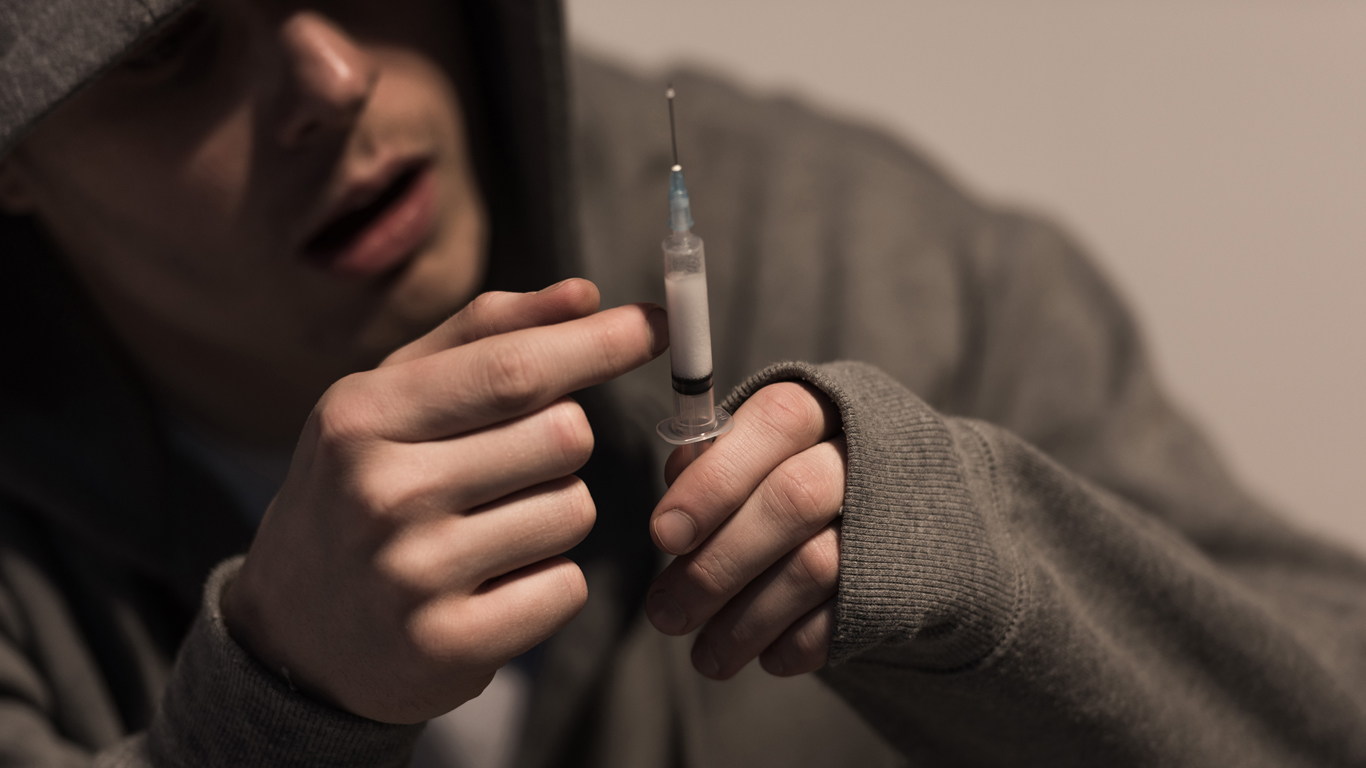Endless Loop of Drug Addiction: From Heroin to Prescription Pills in Kashmir & South Asia
By: Javid Amin | 18 Aug 2025
From One Trap to Another
In Kashmir and across South Asia, a silent epidemic is tightening its grip. People who fight bravely to escape the deadly clutches of heroin addiction are finding themselves caught in another trap—prescription pill dependency.
This troubling pattern is reshaping the narrative of recovery. What begins as a hopeful journey of detox and healing often ends in another cycle of dependence, this time hidden under the socially acceptable guise of doctor-prescribed medications.
At first glance, these medicines are legal, regulated, and trusted. Painkillers, anti-anxiety drugs, and sleeping pills are part of modern healthcare. But in vulnerable individuals—especially those with a history of substance use—these very pills can act as a gateway back to addiction.
As one recovering addict from Srinagar confessed:
“I thought I had beaten heroin forever. But soon the pills given for my anxiety became my new high. I didn’t even realize I was relapsing—until it was too late.”
This article dives deep into the endless loop of addiction, the medical and social loopholes, the psychological traps, and the urgent reforms needed to break this cycle.
The Vicious Cycle: From Heroin to Pills
The journey from heroin to prescription pill addiction is rarely sudden—it unfolds in phases.
01. Initial Recovery: A Fragile Victory
Detoxing from heroin is an excruciating process. Physical withdrawal symptoms—sweating, vomiting, chills, and unbearable cravings—can last for days. Emotional turmoil follows, with depression, anxiety, and fear of relapse lurking in the background.
With medical assistance, community support, and family care, many individuals survive this brutal phase. They feel hopeful, clean, and ready to rebuild their lives. The light at the end of the tunnel seems real.
But this victory is fragile. Without comprehensive support—psychological counseling, purpose-driven engagement, and social acceptance—the foundation remains weak.
02. Prescribed Relief: A Legal Gateway
During recovery, individuals often face insomnia, panic attacks, nerve pain, or depression. In such cases, doctors may prescribe opioid painkillers, benzodiazepines, or sleep medications.
Examples include:
-
Oxycodone, Tramadol (pain relief)
-
Alprazolam (Xanax) (anti-anxiety)
-
Pregabalin (nerve pain, epilepsy, anxiety)
These drugs are legal, dispensed with prescriptions, and considered safe when used correctly. They bring genuine relief—helping people sleep, calm down, or cope with pain.
However, for a recovering addict, these very medicines become the new temptation.
03. Tolerance and Dependence: The Body’s Silent Shift
With continued use, the body adapts to the medication. The same dose stops working, forcing the person to consume more to feel relief. This phenomenon—tolerance—is the seed of dependency.
Emotional triggers resurface:
-
Stress from unemployment
-
Lingering trauma from conflict (common in Kashmir)
-
Loneliness due to social isolation
-
Stigma from being labeled an “ex-addict”
The pills, once medicinal, become emotional crutches.
04. Recreational Use: Seeking the Old High
Soon, the person is no longer taking the pills just for relief. They begin chasing the familiar high they once felt with heroin. What starts as one extra pill becomes two, then five, then a whole strip in a day.
The act shifts from treatment to escape—from healing to numbing.
05. Addiction Reborn: A Cycle in Disguise
At this stage, the addiction has quietly repackaged itself. It no longer wears the dangerous face of heroin but hides behind the legitimacy of pharmaceuticals.
The person is once again trapped—this time in a cycle that is even harder to break because society often fails to see prescription pill misuse as “real addiction.”
Why It’s So Hard to Break: The Multi-Dimensional Nature of Addiction
Addiction is not a moral weakness. It is a chronic, relapsing disease influenced by biology, psychology, environment, and life experiences.
The American Society of Addiction Medicine (ASAM) defines it as:
“A treatable, chronic medical disease involving complex interactions among brain circuits, genetics, the environment, and an individual’s life experiences.”
Breaking free is hard because addiction attacks every dimension of human existence:
01. Physical Dimension
-
The body becomes chemically dependent.
-
Withdrawal symptoms make stopping unbearable.
-
Sleep, appetite, and energy are controlled by the drug.
02. Emotional Dimension
-
Stress, trauma, and unresolved grief fuel cravings.
-
Each relapse brings guilt and shame.
-
Emotional pain becomes a trigger for further use.
03. Psychological Dimension
-
The brain rewires itself to seek the drug as the only source of pleasure.
-
Decision-making, impulse control, and memory are distorted.
-
The addict feels powerless against their own mind.
04. Spiritual Dimension
-
A deep sense of emptiness sets in.
-
The person loses connection to purpose, faith, and self-worth.
-
Addiction becomes the only “belief system.”
This four-dimensional captivity makes addiction one of the hardest conditions to overcome.
The Shame Trap: “Why Am I Hooked Again?”
Perhaps the cruelest part of relapse is the shame it generates.
Many recovering addicts express thoughts like:
-
“I beat heroin. Why am I hooked again?”
-
“I’m ruining everything. My family would be better off without me.”
-
“People will think I’m weak and hopeless.”
This shame does two things:
-
Pushes the person back into secrecy, making them hide their pill use.
-
Triggers further relapse, because guilt and self-hatred drive them to numb feelings again.
Without empathy, support, and non-judgmental spaces, relapse becomes a spiral that feels impossible to escape.
Prescription Pills: The Hidden Epidemic
While heroin and other street drugs are highly stigmatized, prescription drugs often slip under the radar.
Commonly Misused Pills
-
Opioids: Oxycodone, Tramadol
-
Benzodiazepines: Alprazolam (Xanax), Diazepam
-
Gabapentinoids: Pregabalin, Gabapentin
-
Sleeping pills: Zolpidem, Nitrazepam
Legitimate Uses vs Misuse
-
Prescribed for: post-surgical pain, anxiety, insomnia, nerve damage
-
Misused as: euphoric agents, escape tools, addictive substances
The Gateway Effect
Nearly 80% of heroin users report starting with prescription opioids before transitioning to street drugs. This shows how legal pills can act as both entry and re-entry points to addiction.
In South Asia, easy pharmacy access, lack of prescription monitoring, and corruption in drug sales worsen the crisis.
The Islamic Perspective: Healing vs Numbing
In predominantly Muslim societies like Kashmir, faith plays a crucial role in shaping recovery. Islam recognizes the sanctity of life and warns against self-destruction.
The Qur’an says:
“Do not throw yourselves into destruction with your own hands.” (Qur’an 2:195)
From an Islamic perspective:
-
Healing requires facing pain, not numbing it.
-
True recovery is spiritual as well as medical.
-
Communities are urged to show compassion, not condemnation.
Faith-based rehabilitation programs that combine therapy with spiritual counseling have shown promising results in Muslim societies.
What Needs to Change: Breaking the Loop
To truly address this epidemic, systemic reform is essential.
For Doctors
-
Screen patients for addiction history before prescribing.
-
Use non-addictive alternatives (therapy, physiotherapy, meditation).
-
Monitor dosage, duration, and refill patterns.
-
Educate patients about the risks of dependency.
For Families
-
Understand that relapse is part of recovery—not a failure.
-
Avoid shame-based language (“You’re weak,” “You’re hopeless”).
-
Support with empathy, structure, and boundaries.
-
Encourage counseling, healthy routines, and purpose-driven activities.
For Communities
-
Establish safe spaces for recovering addicts.
-
Launch awareness campaigns about prescription drug misuse.
-
Destigmatize mental health and addiction treatment.
-
Involve religious leaders, educators, and youth groups in prevention.
Bottom-Line: Recovery Must Be Holistic
Escaping heroin is a monumental victory—but it cannot be the end of the journey. If recovery simply leads to another form of dependency, then the healthcare system, families, and communities have collectively failed.
Addiction is not a moral flaw but a chronic condition that requires long-term care, compassion, and holistic treatment.
As one Kashmiri counselor put it:
“Healing begins when pain is faced—not numbed.”
To break the endless loop of drug addiction, we must treat the person as a whole—body, mind, heart, and soul. Only then can recovery become lasting freedom, not just another trap.




